#sino japanese
Photo




1) Elsie Lee Soong on a truck loaded with supplies, Shanghai, to escort medical supplies to the front, July 1937. Belden Apartments behind her. Typed and handwritten captions and photographers stamp on back of photograph. Photograph taken outside the Canidrome. In the background is the Belden Apartments (also known as the Shannan Building), 213 South Shanxi Road.
University of Bristol - Historical Photographs of China reference number: Ro-s099.
2) Elise Lee Soong with bundles of medical supplies, Shanghai. Photograph taken outside the Canidrome. Elsie Lee Soong was born in Oregon, USA. See article in 'The Argus' (17 February 1938): http://trove.nla.gov.au/ndp/del/article/11149506.
University of Bristol - Historical Photographs of China reference number: Ro-n1044.
3) Elsie Lee Soong with bundles of medical supplies, Shanghai. Photograph taken outside the Canidrome. Elsie Lee Soong was born in Oregon, USA. This photograph was published in an unidentified newspaper (probably a Shanghai daily) with the caption: “Here is a bit of feminine charm thrown in with medical supplies and bundles of bandages for the wounded. Mrs. Elsie Lee Soong, in riding togs, is shown shortly before she left with two truck loads of supplies for Soochow late Friday afternoon. Mme. H.H. Kung’s organization contributed three fourths of the consignment and the Shanghai Emergency Relief Society and the Chinese Women’s Club contributed the balance.” Source: the newspaper clipping is in a scrap book about the Battle of Shanghai in 1937, in the Randall Gould Papers at the Hoover Institution, Stanford University. The scrap book is in Box 9 of this collection.
University of Bristol - Historical Photographs of China reference number: Ro-n1043.
4) Elsie Lee Soong and vehicle in Shanghai.
University of Bristol - Historical Photographs of China reference number: Ro-n0045.
#shanghai#oregon#sino-japanese war#medical supplies#canidrome#national revolutionary army#republic of china#nationalist china#japanese aggression in china#sino japanese#chinese americans#chinese immigration to the united states#overseas chinese
0 notes
Text

The Lunar New Year is usually the time for a week-long celebration in Chinatown, but in 1938 China was at war with Japan. On January 31st, residents of Chinatown observed the start of 4642 by praying in Joss houses (temples) rather than carousing in the streets. They were also working toward collecting $600,000, set as the year's war relief quota of the Chinese Consolidated Benevolent Association.
Photo: Associated Press
#vintage New York#1930s#Chinese New Year#Lunar New Year#Chinatown NY#NY Chinatown#Jan. 31#31 Jan.#Sino-Japanese War
97 notes
·
View notes
Text

Chinese soldiers moving via The Great Wall of China, northwest of Japanese-occupied Beijing, 1937
64 notes
·
View notes
Text

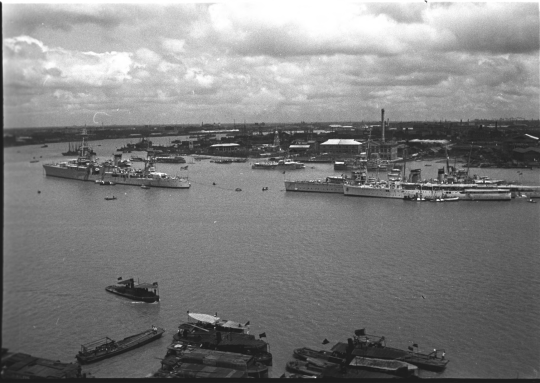


USS HOUSTON (CA-30) and USS AUGUSTA (CA-31) on the Wusong river (Suzhou Creek) in Shanghai, China. Photographed during the Sino-Japanese Hostilities.
Date: February 1932
University of Wisconsin, Milwaukee Library: pe000035, fr208399, pe001214, fr202530
#USS HOUSTON (CA-30)#USS HOUSTON#USS AUGUSTA (CA-30)#USS AUGUSTA#Northampton Class#Cruiser#Warship#Ship#United States Navy#U.S. Navy#US Navy#USN#Navy#Shanghai#China#Sino-Japanese Hostilities#February#1932#interwar period#my post
27 notes
·
View notes
Text
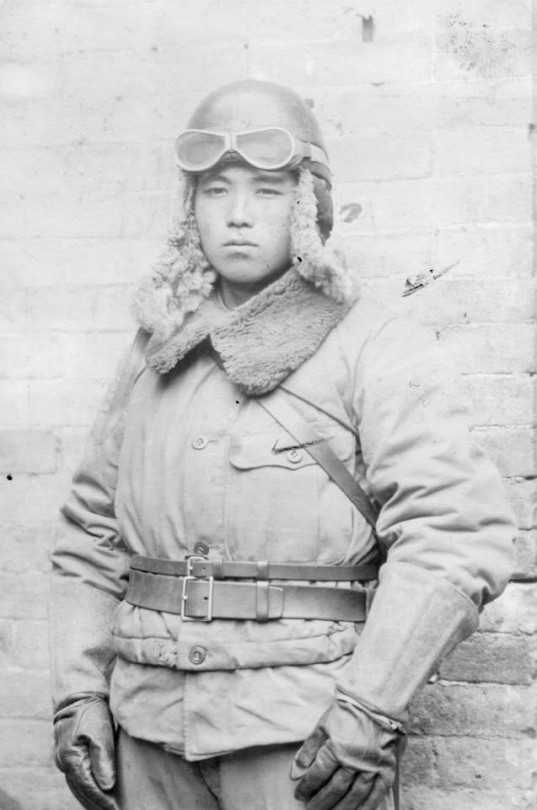
Tankiste japonais - 1930's-1940's
#WWII#guerre sino-japonaise#sino-japanese war#seconde guerre sino-japonaise#second sino-japanese war#armée impériale japonaise#imperial japanese army#tankiste#tanker#1930's#1940's
48 notes
·
View notes
Text

Japanese troops enter the City of Shanghai - 1937
#world war two#1940s#worldwar2photos#history#ww2#wwii#ww2 history#wwii era#world war 2#ww2history#shanghai#China#1937#sino japanese war#japanese army
61 notes
·
View notes
Note
Do you think the sutton Sunk would have made an impact in the second sino-japanese war if china actually got its hands on it?
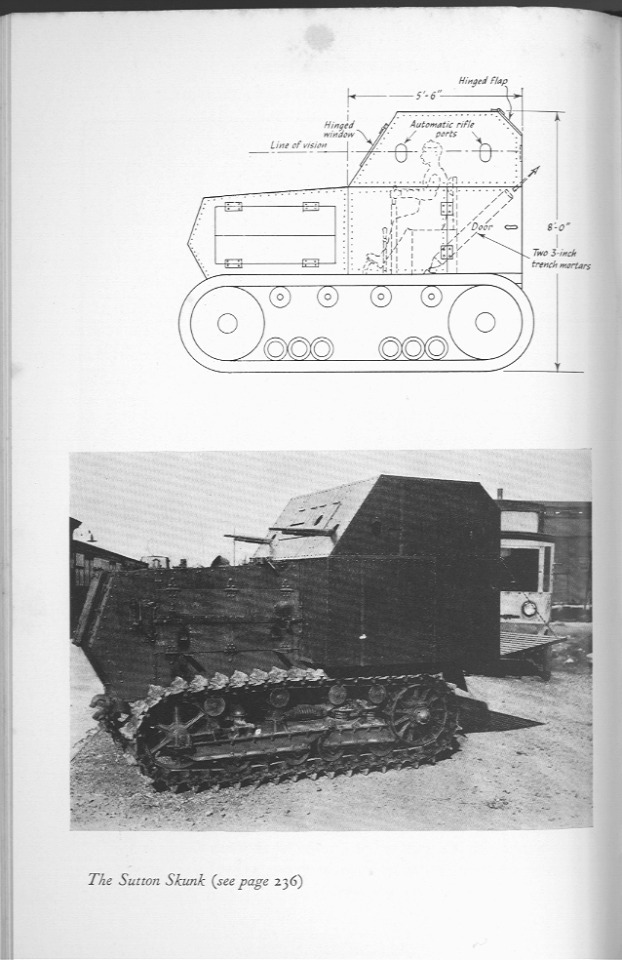
In my opinion, not really, and it has very little to do with the tankette itself. By 1937, China was so woefully behind the rest of the world in technology, industrialization, and development, that there was no real chance of a Chinese victory, especially against Japan, a nation that had seized onto the western tenets and methods of militarism, industrialism, and imperialism like second nature.
I'm sure that, in isolated engagements, the Skunk could have made a difference, but even in the very best scenario, it would be a case of "won the battle, but lost the war"
9 notes
·
View notes
Text
How Eileen Chang Revived My Fascination With the 'Femme Fatale'
Content Warning: Lust, Caution contains scenes of graphic violence, nudity, and discussions of murder (the book only hints at these things). The movie also depicts sexual assault. Viewer discretion is advised.
Spoilers for Lust, Caution (book and film) ahead!
femme fa·tale (noun)
1 : a seductive woman who lures men into dangerous or compromising situations
2 : a woman who attracts men by an…

View On WordPress
#ang lee#assassination plot#chinese history#eileen chang#espionage thriller#femme fatale#historical fiction#leehom wang#lust caution#second sino-japanese war#spy movie#spy thriller#tang wei#Tony Leung Chiu-wai#world war ii
25 notes
·
View notes
Photo
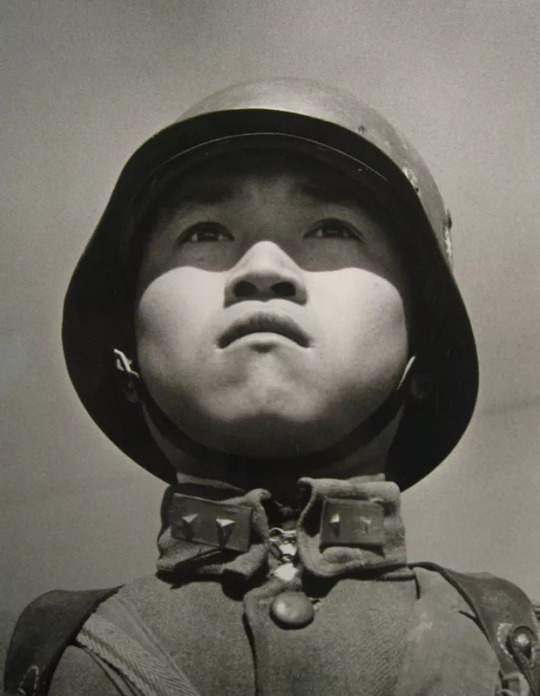
15 year old Chinese Soldier Prior to Departing for the Sino-Japanese Battle Front, 1938
Robert Capa
43 notes
·
View notes
Text
(anyone who may know better - I happily welcome corrections!)
I was reading some more into the Second Sino-Japanese War, as is my wont, and I think the key to understanding Imperial Japan is that they were (A) obsessed with securing the dominance and propagation of Yamato culture via (B) copying everything the West did as closely as possible. They were undoubtedly motivated by a very strong envy of Western empires and entitlement to a seat at the same table. Not that they were more entitled than the ones already sitting at the table, of course! No colonial asperations were morally pure or justified beyond simple nationalistic greed. But it's interesting because in those other cases the table, by which I mean not just the benefits of empire but the balance of power where the Western empires had a stranglehold on the world, kinna gradually formed between them over the course of centuries, and Japan was like, on the outside trying very hard to break in and take that for themselves after the Perry Expedition. And holy hell did they go a long ways towards making themselves a modern world power in an extremely short amount of time, the exact opposite of the Qing Dynasty, which was in such disarray during this entire period that by the time WW2 rolled around it was interrupting China's ongoing civil war that had been going on since a couple of decades earlier when the Qing had fallen.
Like, they suppressed the local languages of their colonial conquests but then, also, look at this:
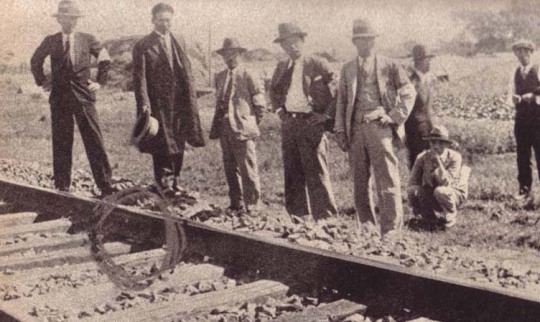
That's a group of IJ officials pretending to inspect where a fake bomb was set off to false flag a justification for taking Manchuria. Japanese people dressed in "Western"-style clothing is hardly anything surprising now, but in-context, it's strange. Because like, IJ was trying so hard to make all of East Asia distinctly Japanese, right? But it was all filtered through that desire to be as powerful and glorious as they saw the Western world. IJ was, in a sense, stuck in a mindset of "anything you can do I can do better" - towards the West, with East Asia just being the tool with which they proved that with.
Fear of a Qing-style Century of Humiliation probably made it feel existential on some level, a case of doing or dying on top of plain nationalism. To assert their independence, because an empire by definition can not be subordinate to any other power, Korea went through modernization reforms and proclaimed itself an empire in 1897 despite patently not being an empire (the justification being that Korea had historically once been divided into three kingdoms), but it was too little too late and IJ annexed them just a decade or so later, which absurdly must have seemed to justify IJ's worldview that one was either a colonizer or the colonized.
There was a political cartoon about the Boxer Rebellion where the Eight-Nation Alliance is seen carving up a pie labeled "China" as a Chinese man looks on in outrage, and it's so fascinating, because the Chinese and Japanese man (who, side note, appears to be the only genericized ENA rep rather than a caricature of a specific person) are drawn in the same racist way yet Japan was nevertheless by the turn of the century seen by the West as being at least close to same level - the full understanding of how far Japan had come on the world stage would arrive just a few years later when Japan kicked Russia's ass in the Russo-Japanese War.
The Russo-Japanese War is particularly interesting in regards to the disparity between how IJ viewed Asia and the West, because one thing that particularly shocked the latter was how 'gentlemanly' IJ's wartime behavior was, treating prisoners and civilians with boundless (and most importantly for the IJ, vocal) generosity. Yet, just a decade earlier during the First Sino-Japanese War, they committed many atrocities that would foreshadow the many they committed in the second. Unsurprisingly, the West quickly forgot the PR scandal IJ made for itself with the Port Arthur massacre of 1894 and declared that it's conduct in the war with Russia (keep in mind I am paraphrasing a turn-of-the-century opinion in a historical context!) "proved Japan is civilized".
It's interesting to think that the person who sent Perry to open up Japan and had this huge radical affect in causing Japan to become obsessed with modernization and catching up, which led to as much as it did, was...Millard Fillmore. Who Wikipedia notes is ranked by historians as both one of the worst and least-memorable presidents ever. The fact that he's in a very real way responsible for one of the most evil regimes in history is probably underdiscussed.
#japan#imperial japan#cw war crimes#world war 2#ww2#boxer rebellion#second sino-japanese war#first sino-japanese war#russo-japanese war#qing dynasty
2 notes
·
View notes
Note
During WWII did the Japanese Empire have any interest in taking possession of Tibet or securing the then child Dali Lama?
Not that I'm aware of, but they needed a whole lot of China to get through before even worrying about trying to take Tibet. I doubt they were planning that far ahead.
Thanks for the question, Anon.
SomethingLikeALawyer, Hand of the King
9 notes
·
View notes
Photo

Battle of Shanghai, 1937
Claiming an incident at the Marco Polo Bridge, southwest of Beijing, Japan attacked China on July 7, 1937. This was the start of the Second Sino-Japanese War, the objective of which was to create in China a zone under the influence Japanese. August 13 begins the Battle of Shanghai.
by @LegendesCarto
63 notes
·
View notes
Text
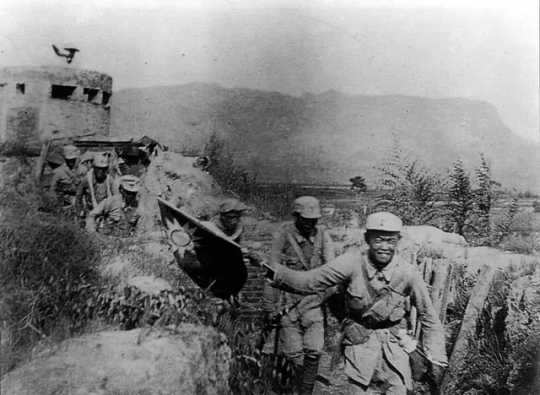
Victorious Chinese Communist soldiers holding the flag of the Republic of China during the Hundred Regiments Offensive.
95 notes
·
View notes
Text
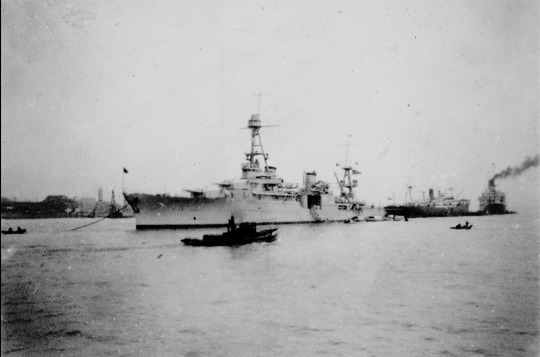



USS HOUSTON (CA-30) in Shanghai during the Sino-Japanese Hostilities.
Date:February 1932.
Historical Photos of China: ep01-365, ep01-373, Ep01-408, Ep01-369
#USS HOUSTON (CA-30)#USS HOUSTON#Northampton Class#Cruiser#Warship#Ship#United States Navy#U.S. Navy#US Navy#USN#Navy#Shanghai#China#Sino-Japanese War#February#1932#interwar period#my post
24 notes
·
View notes
Text
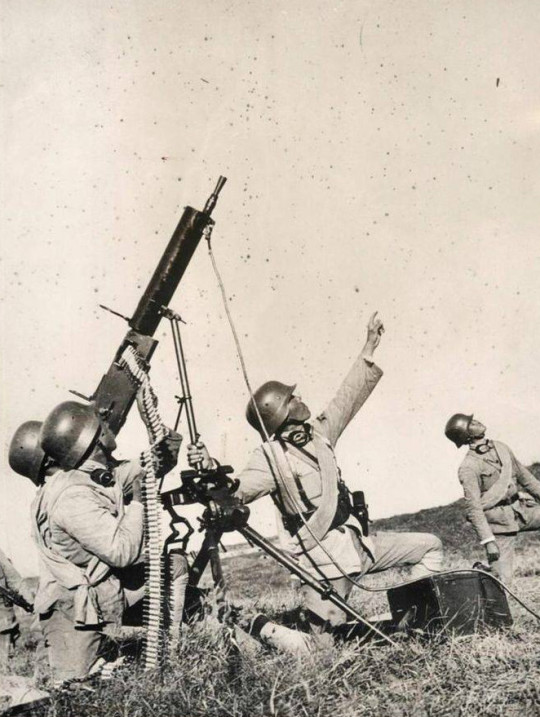
Soldats chinois nationalistes avec une mitrailleuse lourde MG 08 Maxim Type 24 - Guerre sino-japonaise
#WWII#guerre sino-japonaise#sino-japanese war#seconde guerre sino-japonaise#second sino-japanese war#armée chinoise#chinese army#armée nationale révolutionnaire#national revolutionary army#mitrailleuse#machine gun#mitrailleuse lourde#heavy machine gun#maschinengewehr 08#mg 08#maxim
25 notes
·
View notes
Text
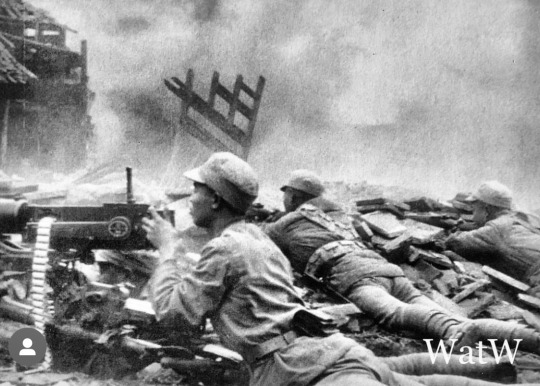
Chinese troops man a machine gun position during the Battle of Changteh - November 1943. The Battle of Changde (Battle of Changteh) was a major engagement in the Second Sino-Japanese War in and around the Chinese city of Changde (Changteh) in the province of Hunan. Despite major losses for both sides and alleged reports that the Japanese army used chemical weapons Chinese forces managed to hold out for a decisive and defensive victory.
#world war two#1940s#worldwar2photos#history#ww2#wwii#ww2 history#wwii era#world war 2#ww2history#chinese army#changteh#sino japanese war#1943#machine gun
35 notes
·
View notes